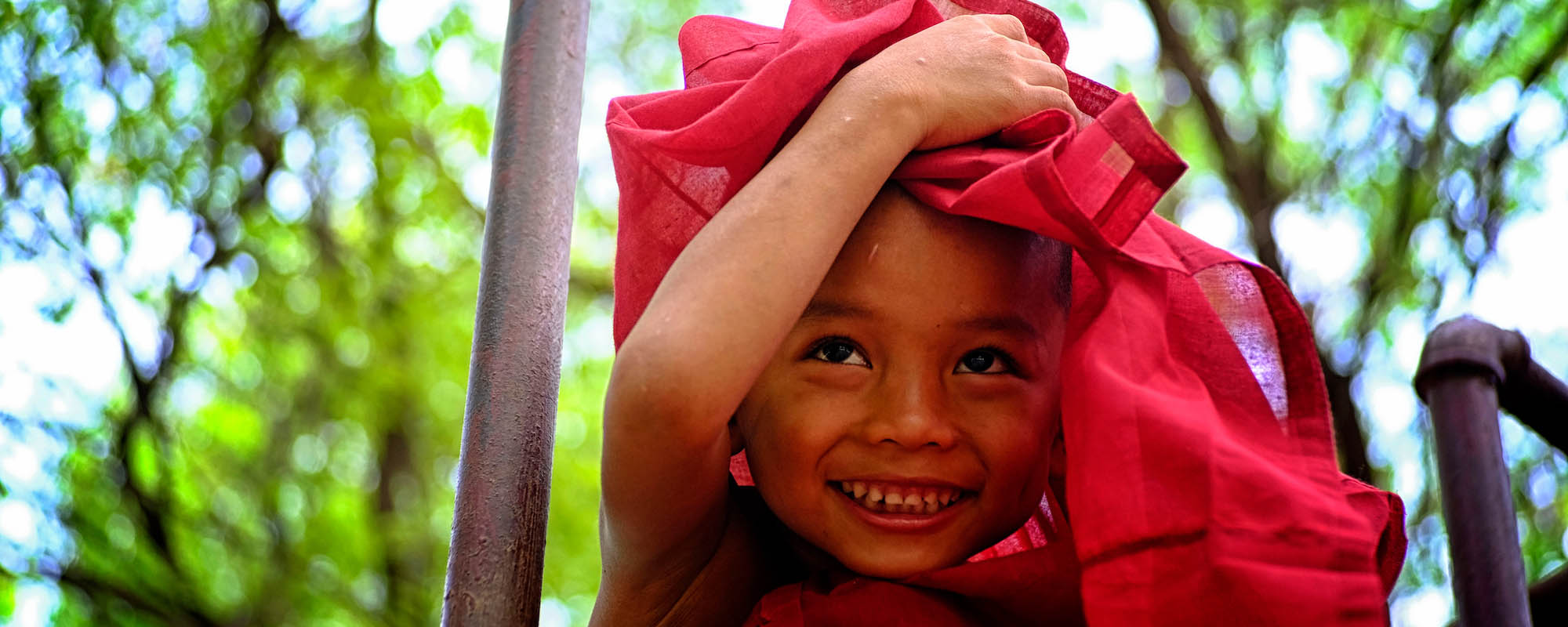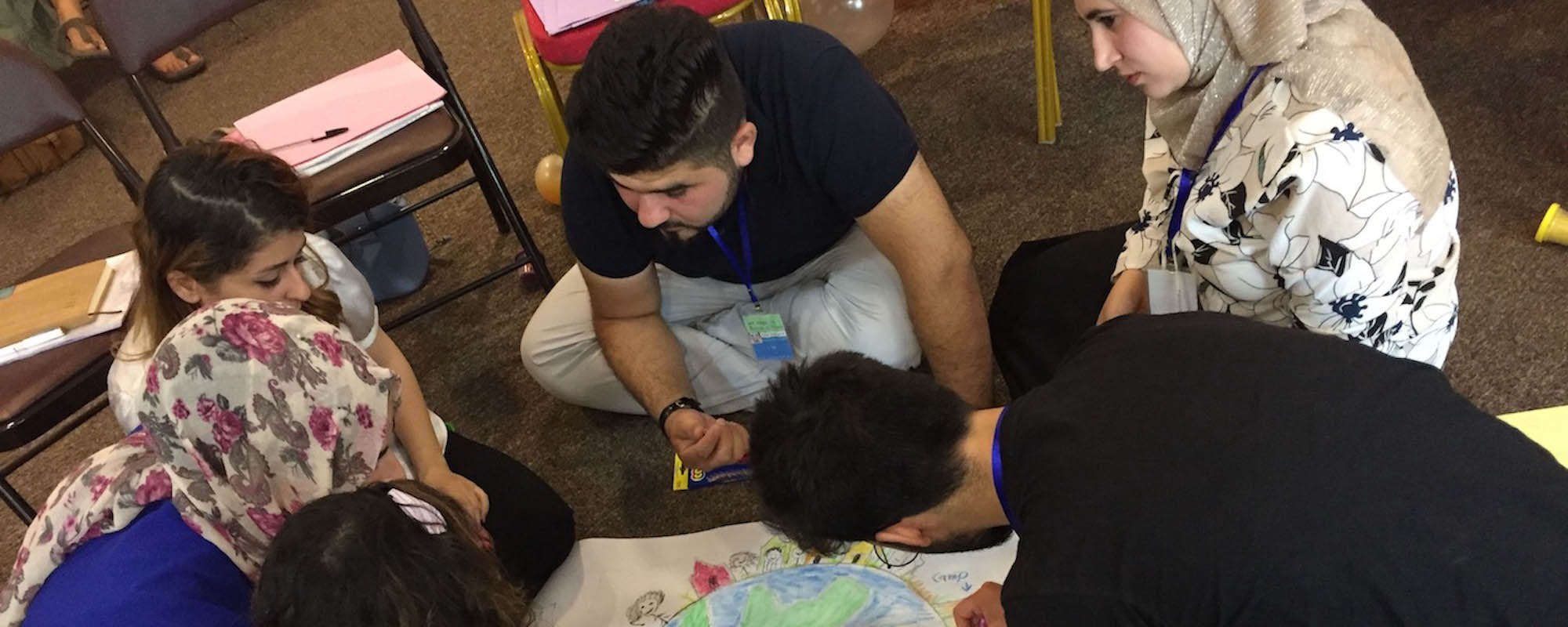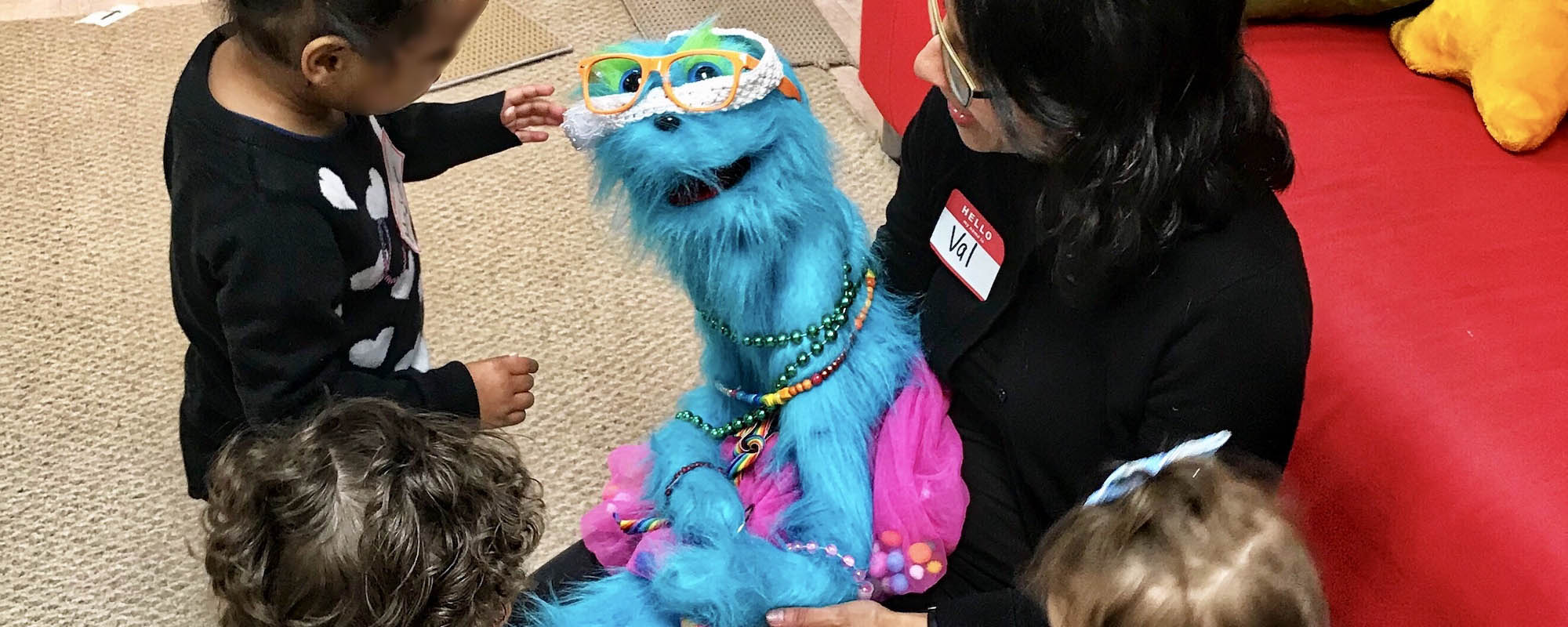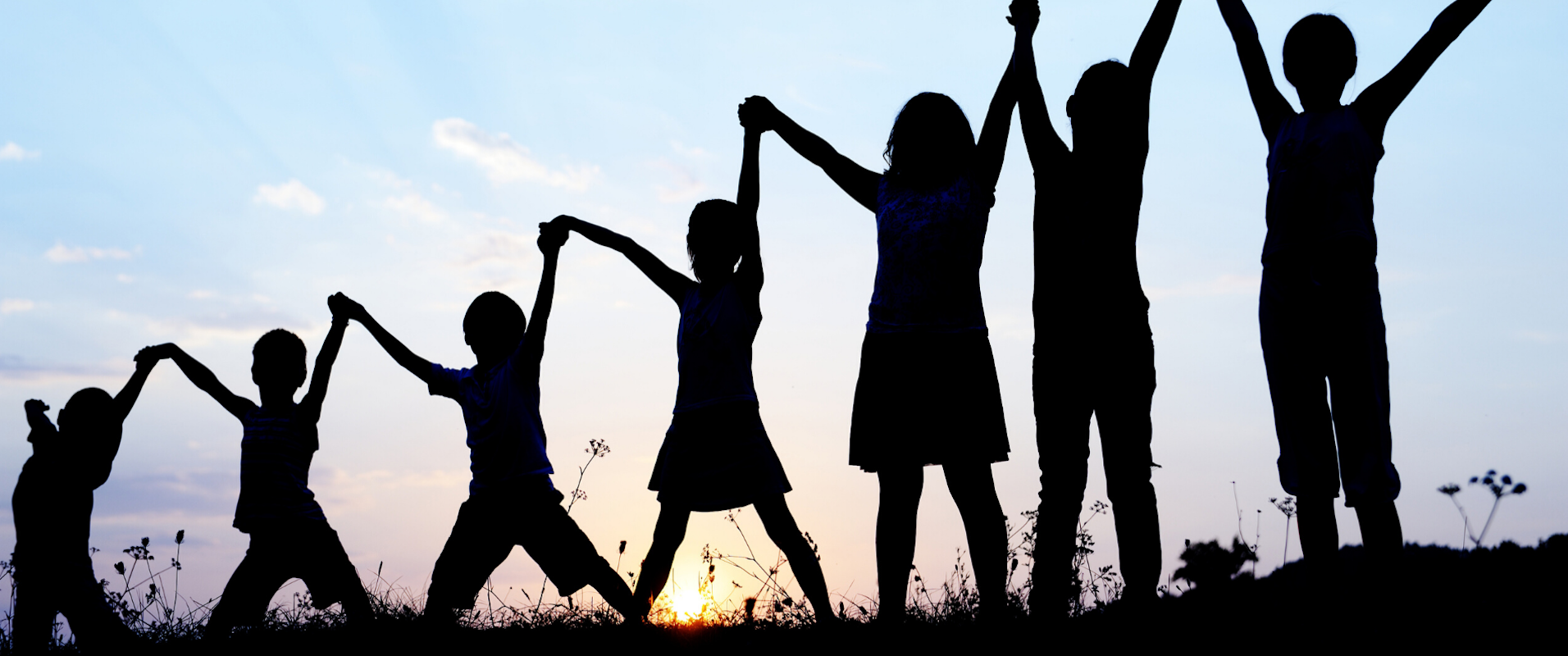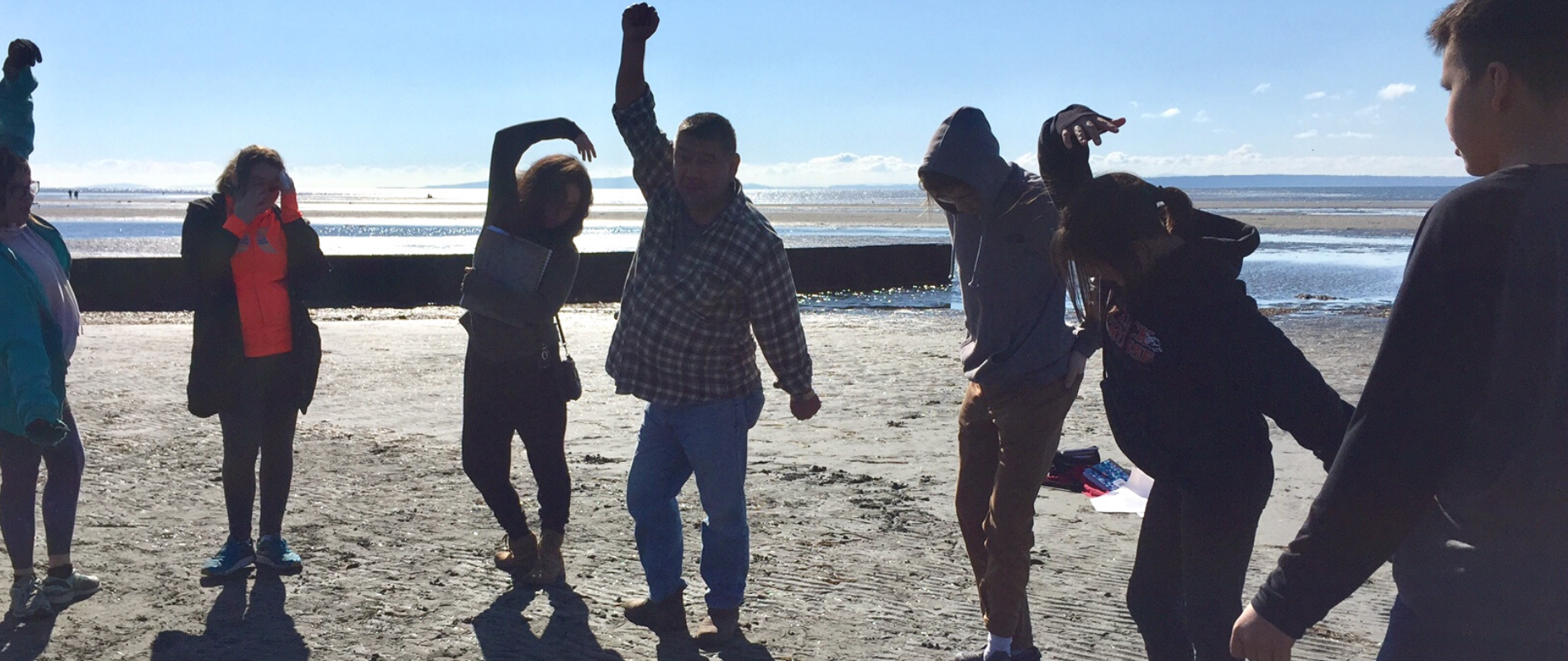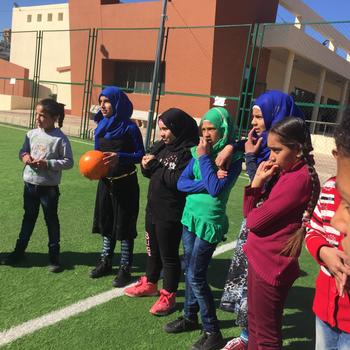Associate Laura Lee connects with 12 year-old Amira, who fled the conflict in Syria to live in Lebanon with her mother, her father, her 2 brothers and her sister. Through this connection, Laura and Philip Cook are exploring the importance of sport as a way to foster protection and wellbeing for displaced youth.
Amira loves to play football with her friends at the weekly session run by Right to Play Lebanon, where she is brought by bus to a football field at a local community centre. She shared “when we started, I told the boys ‘I can play too and I’m not intimidated by you. Girls can play too’.’’ She also loves that playing football gives her energy and confidence and helps her to cooperate with others, even in school and at home. “We feel like were building a talent!” she adds. She goes to school and loves it because she can learn a new language. She doesn’t like it when she sees her friends who don’t try to learn and to write. “If they try”, she says, “They can make it.” When asked what she would like to do she shared that she wanted to become a lawyer.
“I see sometimes girls are not given rights -- they are sold and not given right. I know a girl, she was obliged to get married to someone. I want to help them. I want to make the world better for girls. They can be even better than boys!”
Amira is one of millions of youth who have fled from violent and conflict affected contexts. With a recent estimate of at least 8 million youth on the move – approximately 1/3 of the world’s displaced people, protection and ensuring the wellbeing of displaced youth is of critical importance [1]. Youth fleeing violent contexts are in a particularly precarious position, as they deal with stress and anxiety of forced displacement, economic and social loss, violence, and adjusting to a new living situation. In this period, youth are also transitioning from childhood to adulthood. Within a hardship context, they navigate societal expectations and future opportunities, often with limited educational and employment opportunities. Sports, however, is recognized for its potential to bring physical health and to contribute to positive social outcomes among displaced youth. Sports is also an important tool to achieve protection outcomes among youth [2].
For this project, IICRD has teamed up with a dynamic team – Terre des hommes, United Nations High Commissioner for Refugees (UNHCR), the International Olympic Committee and a wider consultative group [3] – to explore how sports can be used to protect and strengthen the wellbeing of displaced youth aged 10 to 24 years. IICRD Executive Director, Philip Cook and Associate, Laura Lee, are leading the research that will be used to develop global guidelines on the use of sport for protection of displaced youth.
“We don’t have a lot to do here in the camp. Sport helps us to be busy and keeps us safe. Some youth engage in bad habits and fighting. When we are in sports, we are safe and not in conflict. We can even teach our friends to live well with others in the community.” 23 year old young man and volleyball coach, Kiziba Camp, Rwanda
The team is documenting best practices in designing, implementing, monitoring and evaluating sports programs in humanitarian settings for youth. This includes field visits to six countries (Lebanon, Jordan, Kenya, Rwanda, Colombia and Thailand), desk research, a youth survey, a field workers survey and key informant interview reports. In the field visits, participatory research including reflective child-centered activities and quantitative/qualitative play-based evaluation tools has been carried out with children and youth, and those working with them. The tools help to explore the issues that displaced youth are facing in their contexts and the impact - and potential impact - of sports in their lives.
The IICRD team will continue to work with the partners, the consultative group and the global reference group of people engaged in sport and play projects world-wide. The goal is to consolidate the results and develop the guide that may be used for future planning of sports programs. The preliminary findings were recently shared at the Canadian Evaluation Society Conference. The global guidelines are likely to be launched in June 2017.
“I saw new people. I have new friends. I now know the rules of football. Being a coach helps me to fix problems in my family. Girls were nervous at first. I helped them to be relaxed. When they play as a group, it helps them to play together. We have cases from the war of children with disabilities. I help them to see how they can live in this life, how they can complete this life. We are Syrian, we can do anything!” Female football coach, Za’atari Camp, Jordan
Learn more about this project.
Sources:
[1] The Women’s Refugee Commission estimates that young people aged 10-24 make up over 33% of the world’s displaced population and that at least 8 million young people aged 15-24 years have fled armed conflict and human rights abuses. Source: Evans, R., Lo Forte, C., & McAslan Fraser, E. (2013a). UNHCR’s Engagement with Displaced Youth. Geneva, Switzerland: UNHCR.
[2] UNHCR, IOC, & TDH. (2016). Sports for Protection in humanitarian settings A Toolkit for working with young people.
[3] Consultative Group: UNICEF, Right to Play, Fight for Peace, Peace Players International, Mercy Corps, War Child, Brock University, Swiss Academy for Development, University of Bern

